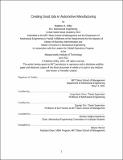Creating Good Jobs in Automotive Manufacturing
Author(s)
Kilby, Matthew A.
DownloadThesis PDF (1.224Mb)
Advisor
Ton, Zeynep
Chun, Jung-Hoon
Terms of use
Metadata
Show full item recordAbstract
A stable workforce is critical to successful manufacturing operations. A stable workforce results in repeatability of jobs, which in turn leads to higher quality vehicles and decreased down-time on the assembly line. It also results in lower turnover costs and allows management to focus on performance improvement instead of putting out fires that arise throughout the workday. This research explores the current employment strategy of a major automotive manufacturer, and identifies key drivers that lead to the 11.8% annualized turnover rate they are experiencing, with some employee segments as high as 38%. Specifically, we dive into the dynamics of the Trim & Chassis Department, which has the highest employee turnover in the manufacturing plant, in order to identify how effectively Nissan is meeting employee needs, and where they can adapt in order to improve. The goal of this research is to identify the key drivers of turnover, quantify effects of turnover in an automotive manufacturing setting and to provide recommendations for how to reduce turnover.
Through a combination of data analysis, employee interviews, and Gemba walks, we find that workload, employee empowerment, and career development play a prominent role in this high-volume manufacturing environment. Employee turnover is 57% more costly than previous models predicted when accounting for indirect costs of employee turnover. I also find that using System Dynamics modeling can be an effective tool to model these interconnected variables in order to better understand the reinforcing feedback loops at hand, and how to address them in order to make positive change. Additionally, this research makes recommendations on how to use the Good Jobs Strategy framework to reduce employee turnover and improve performance. Specifically, we look at increased staffing levels, investments in people, and cultural wins, combined with a financial calculator for management to use in order to quantify their investments.
Date issued
2021-06Department
Massachusetts Institute of Technology. Department of Mechanical Engineering; Sloan School of ManagementPublisher
Massachusetts Institute of Technology